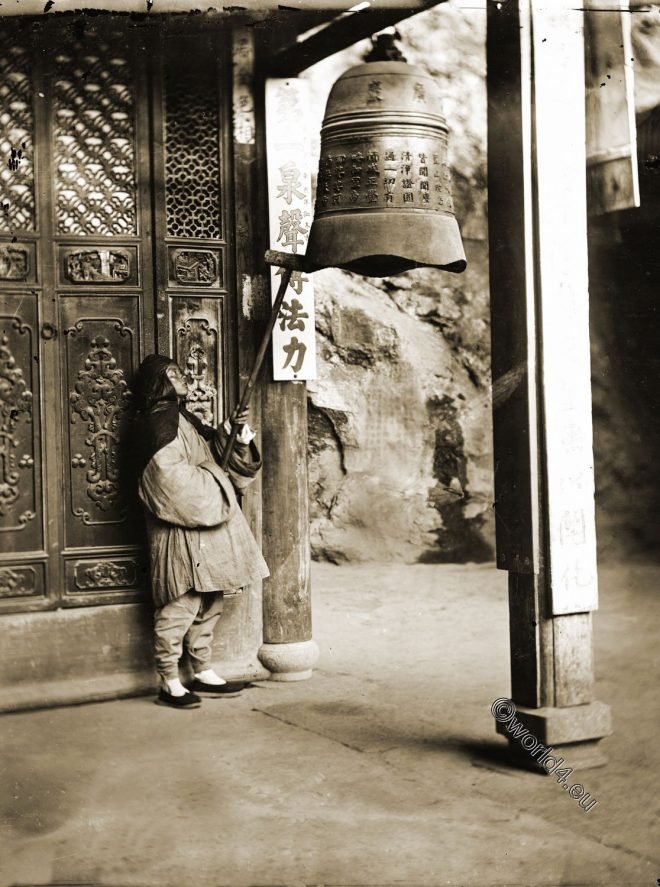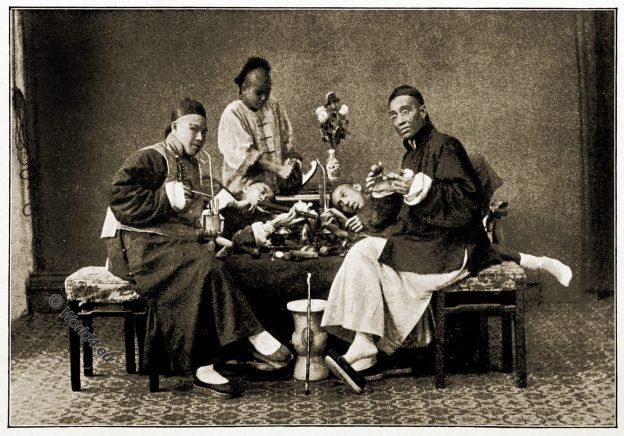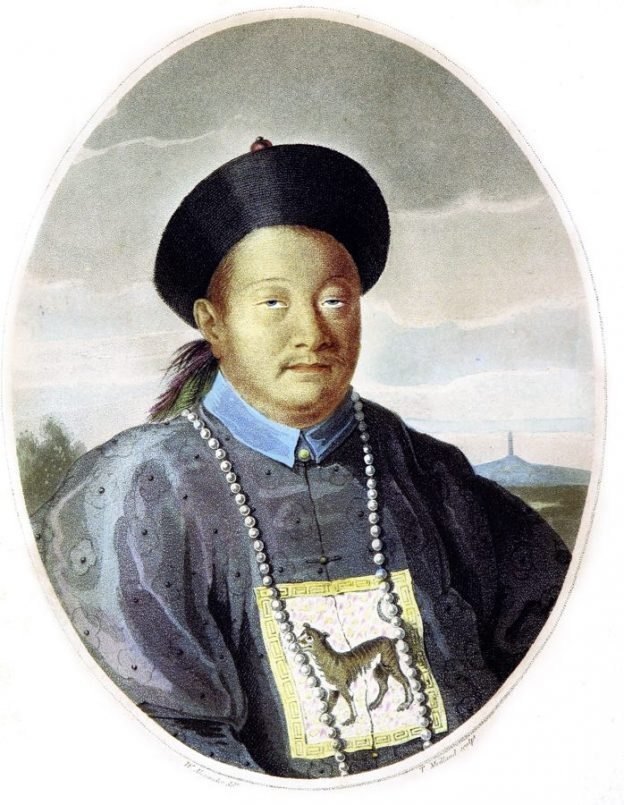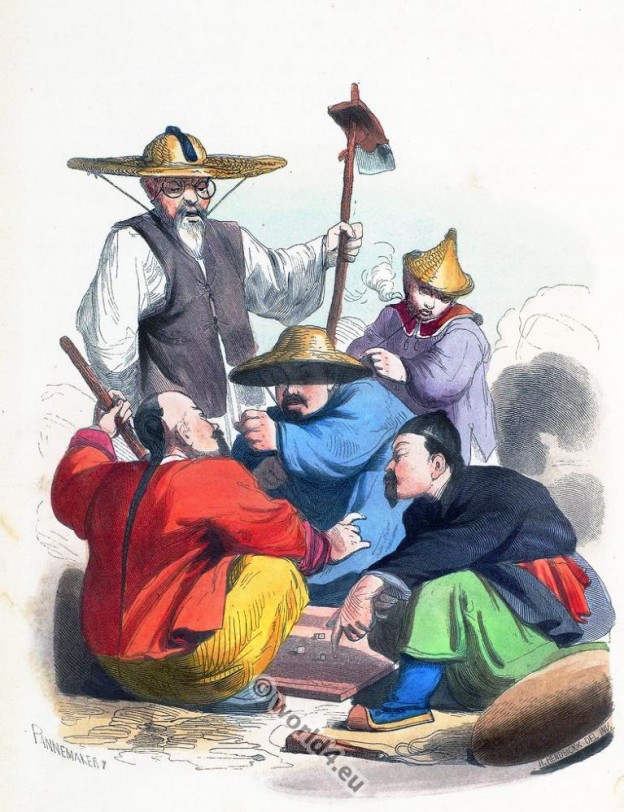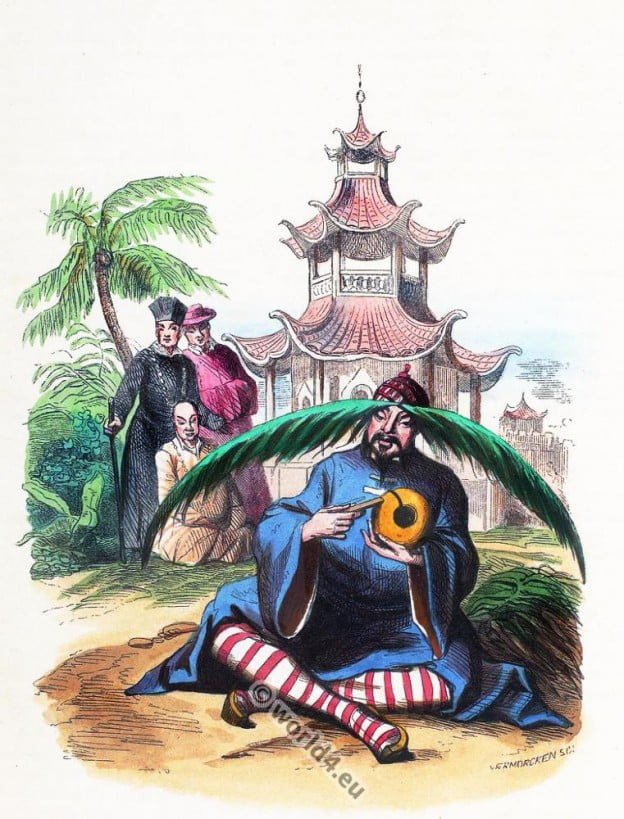Monks in Buddhist monasteries toll bells 108 times daily, symbolizing the Chinese year and believed to soothe souls.
Tag: Chinese customs
Traditional Chinese dress, culture and customs of the various regions.
China. Paper-house burnt for the benefit of the dead.
In Ngan-hwei, paper-houses are burnt to convey necessities to the deceased, a persistent ancient custom.
Variegated dress known as that of the “hundred families”.
In China, a tradition involves creating a child’s dress from begged cloth pieces to invoke blessings and protection, known as “Peh-kia-i.”
A Chinese woman of highest class.
The annexed Plate represents a female of the highest class in her finest habit.
Various opium pipes. Opium smocking in Shanghai 1899.
The native opium grown in China, is generally considered the most inferior, and the Indian opium, especially Malwa and Patna, the best.
A Chinaman. Chinese Mandarin and the dog as a sign of dignity.
The dog is a sign of dignity both in China and Siam. It appears at the portrait VAN TA GIN in Barrow’s Travels in China wears on his breast.
Chinese guys costumes. Types chinois.
Chinese guys costumes. Types chinois 1834. Gallery: Asian costumes by Auguste Wahlen. Manners, customs and costumes of all peoples of the world.
Chinese lady and her servant costumes.
Chinese lady and her servant costumes. Dame Chinoise et sa suivante, 1834. Gallery: Asian costumes by Auguste Wahlen. Manners, customs and costumes of all peoples of the world.
Chinese monks costumes. Bonzes chinois.
Chinese monks costumes. Bonzes chinois, 1834. Gallery: Asian costumes by Auguste Wahlen. Manners, customs and costumes of all peoples of the world.
Chinese merchant. Carriage, 1843.
Marchant Chinois. Voiture à voilà, 1843. Asian costumes by Auguste Wahlen.

